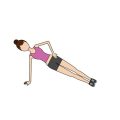1. Understanding the Fear of Falling
Prevalence of Fear of Falling Among Older Adults in the U.S.
Fear of falling is a common concern among older adults in the United States. Studies show that up to 50% of people over age 65 worry about falling, even if they have never experienced a fall before. This fear can affect both those living independently and those in assisted living facilities.
Causes and Risk Factors
The fear of falling often develops after an actual fall or near-miss, but it can also arise from hearing about others’ falls or due to physical changes that come with aging. Here are some common causes and risk factors:
| Risk Factor | Description |
|---|---|
| Previous Falls | Having fallen before increases anxiety about future falls. |
| Balance Issues | Problems with balance or walking increase fear and risk. |
| Vision Changes | Poor eyesight makes it harder to spot obstacles. |
| Chronic Illnesses | Conditions like diabetes or arthritis can impact mobility. |
| Medications | Certain medications may cause dizziness or weakness. |
| Lack of Physical Activity | Muscle weakness from inactivity raises fall risk. |
Impact on Daily Life
The fear of falling can have a major effect on daily life. Many older adults avoid activities they enjoy—like walking outside, visiting friends, or exercising—because they are afraid of losing their balance. This can lead to social isolation, loss of independence, and even depression. Ironically, avoiding activity can actually make muscles weaker and balance worse, increasing the actual risk of falling.
Common Misconceptions About Falling
- “If I stay at home, I won’t fall.” This is not always true—many falls happen at home.
- “Falling is just a part of getting older.” While falls are more common with age, many can be prevented with the right strategies and support.
- “If I use a walker or cane, I’m giving up my independence.” Aids can help you stay active and safe, not take away your independence.
Understanding these factors is the first step in addressing fears and helping older adults regain confidence in their daily lives.
2. Psychological Effects and Consequences
Fear of falling is a common concern among older adults in the United States. While it’s normal to be cautious, this fear can have a big impact on daily life and overall well-being. When seniors worry about falling, they might start to avoid certain activities or places. This can lead to a downward spiral that affects both mental and physical health.
How Fear of Falling Impacts Daily Life
Let’s take a closer look at how fear of falling can influence seniors’ lives:
| Area Affected | Impact | Examples |
|---|---|---|
| Mobility | Reduced willingness to move around or exercise | Staying indoors, skipping walks, or not going up stairs |
| Social Life | Social isolation due to avoiding gatherings or outings | Missing family events, church services, or community centers |
| Independence | Increased dependence on others for daily tasks | Relying on family or caregivers for shopping, cleaning, or self-care |
| Quality of Life | Feeling less confident and more anxious day-to-day | Losing interest in hobbies, feeling sad or frustrated more often |
The Emotional Toll of Fear of Falling
The emotional impact can be just as serious as the physical consequences. Many older adults who are afraid of falling may experience anxiety, stress, or even depression. They might feel embarrassed about their fears or worry about being a burden to their loved ones. Over time, these feelings can make it harder for them to stay active and engaged in life.
Common Psychological Responses
- Anxiety: Worrying about falling again can make everyday tasks feel overwhelming.
- Lack of Confidence: Seniors may doubt their ability to move safely or handle unexpected situations.
- Frustration: Losing independence can lead to anger or irritation with themselves or others.
- Low Self-Esteem: Feeling less capable than before can affect how seniors see themselves.
The Cycle of Fear and Reduced Activity
Unfortunately, when seniors let fear keep them from being active, they may actually become weaker and less steady on their feet. This makes the risk of falling even higher—a cycle that’s tough to break without the right support and encouragement.

3. Assessment and Identification
Understanding the Importance of Assessment
For many older adults in the United States, the fear of falling is a real concern that can impact daily life and independence. To help seniors regain confidence and prevent unnecessary limitations, it’s essential to properly assess and identify this fear. Effective assessment sets the stage for tailored rehabilitation strategies and helps build trust between healthcare professionals and older adults.
Practical and Culturally Relevant Assessment Tools
Using practical, culturally sensitive tools is key when working with older Americans. Here are some widely accepted approaches:
| Tool/Approach | Description | Cultural Considerations |
|---|---|---|
| Falls Efficacy Scale (FES) | A questionnaire measuring confidence in performing daily activities without falling. | Available in English and Spanish; language should match the patients preference. |
| Activities-specific Balance Confidence Scale (ABC) | Assesses how confident a person feels about not falling during various tasks. | Use examples relevant to American lifestyles, like grocery shopping or walking on uneven sidewalks. |
| Direct Conversation | One-on-one discussions about past experiences, fears, and daily routines. | Encourage open dialogue using familiar language; respect personal space and privacy common in U.S. culture. |
| Observation During Activities | Watching how an older adult moves during simple tasks at home or in a clinic. | Avoid making the person feel judged; observe in comfortable settings such as their own living space if possible. |
Building Trust Through Empathetic Communication
The way we talk to older adults about their fears can make all the difference. Open, empathetic communication creates a safe environment where individuals feel heard and respected. Here are some tips for effective conversations:
- Use Active Listening: Give your full attention, nod, and repeat back what you hear to show understanding.
- Avoid Medical Jargon: Use plain English, such as “feeling unsteady” instead of technical terms like “gait instability.”
- Acknowledge Feelings: Let them know it’s normal to feel worried about falling—many people their age do too.
- Ask Open-Ended Questions: For example: “Can you tell me about any times you felt nervous walking outside?” or “What activities make you most concerned about falling?”
- Create a Non-Judgmental Space: Reassure them that your goal is to help them stay active and independent.
Sample Conversation Starters
| Question/Statement | Purpose |
|---|---|
| “Have you ever felt nervous about losing your balance at home?” | Opens up discussion without pressure or judgment. |
| “Many people your age have similar worries. Would you like to share more about your experience?” | Normalizes the fear and encourages sharing. |
| “Are there any activities youve stopped doing because of concerns about falling?” | Identifies changes in routine due to fear. |
Tailoring Assessments for Diverse Backgrounds
The U.S. is home to a wide range of cultural backgrounds. When assessing fear of falling, consider preferences for privacy, family involvement, language, and traditions. Involve family members if desired by the older adult and provide materials in their preferred language. This approach shows respect for individual values and helps ensure accurate assessment results.
4. Evidence-Based Psychological Strategies
Cognitive-Behavioral Interventions
Cognitive-behavioral interventions (CBT) are widely used in the United States to help older adults manage their fear of falling. CBT focuses on changing negative thoughts and beliefs about falling, and teaching practical coping skills. For example, if someone constantly worries, “If I fall, I’ll never recover,” a therapist can work with them to reframe this thought into something more positive and realistic, like “I have tools and support to help me stay safe and get up if I need to.” CBT often includes goal-setting, practicing safe movements, and building confidence step by step.
Exposure Therapy
Exposure therapy is another strategy that helps older adults gradually face situations that make them anxious about falling. Instead of avoiding activities like walking outside or climbing stairs, exposure therapy introduces these challenges in a controlled and supportive setting. This helps individuals learn that they can handle these situations safely. A physical therapist or psychologist might start with simple tasks indoors before moving to more challenging outdoor activities. Over time, this approach reduces anxiety and builds trust in their abilities.
Mindfulness Approaches
Mindfulness-based strategies encourage older adults to focus on the present moment rather than worrying about the possibility of falling. Techniques like deep breathing, guided relaxation, or mindful walking can help reduce anxiety and improve balance. Mindfulness practices are easy to learn and can be done at home or in a group setting. They also promote self-awareness, which is important for identifying risky situations and making safer choices.
Comparison of Psychological Strategies for Reducing Fear of Falling
| Strategy | Main Focus | How It Helps | Common Settings |
|---|---|---|---|
| Cognitive-Behavioral Interventions (CBT) | Changing negative thoughts; teaching coping skills | Builds confidence, reduces worry about falling | Therapy sessions, rehab clinics, at home with guidance |
| Exposure Therapy | Gradual exposure to feared activities | Reduces avoidance; increases activity safely | Physical therapy centers, community programs |
| Mindfulness Approaches | Staying present; reducing anxiety through awareness | Lowers stress; improves focus and balance | Group classes, home practice, senior centers |
Putting Strategies into Practice
Older adults benefit most when these psychological strategies are combined with physical rehabilitation. Working closely with therapists, family members, and caregivers creates a supportive environment where individuals feel safe to try new approaches and regain their independence. These evidence-based techniques can make a real difference in reducing fear of falling and improving quality of life.
5. Promoting Confidence and Independence
Community Resources for Older Adults
In the United States, there are many community resources designed to help older adults overcome the fear of falling and regain their confidence. Local senior centers, Area Agencies on Aging (AAA), and YMCAs often offer fall prevention classes, balance exercises, and workshops tailored for seniors. Many hospitals and physical therapy clinics also run educational seminars about fall risk and safety at home.
Popular Community Programs
| Program Name | Description | How to Access |
|---|---|---|
| A Matter of Balance | Group-based classes focusing on practical strategies to reduce fear of falling and increase activity levels. | Check local senior centers or AAA listings. |
| Stepping On | Seven-week program teaching strength, balance, and safety techniques. | Find through state health departments or community hospitals. |
| SilverSneakers | Fitness programs for adults 65+ including balance training and social support. | Often included with Medicare Advantage plans; check eligibility online. |
Support Groups and Peer Connections
Support groups can help older adults realize they are not alone in their fears. Sharing experiences with peers fosters motivation and helps build emotional resilience. Organizations like the National Council on Aging (NCOA) and local chapters of AARP offer group meetings both in-person and online where seniors can discuss concerns and learn from each other’s successes.
Benefits of Support Groups
- Emotional support: Reduces feelings of isolation and anxiety.
- Practical advice: Members share tips that have worked for them in daily life.
- Motivation: Seeing others make progress encourages personal growth.
Confidence-Building Techniques
Rehabilitation professionals in the U.S. often use specific techniques to help older adults build confidence after a fall or near-fall event. These include:
- Gradual exposure: Start with safe, small steps such as standing up from a chair, then progress to walking short distances with supervision.
- Positive reinforcement: Celebrate every achievement, no matter how small. This can boost morale and encourage continued participation.
- Cognitive-behavioral techniques: Challenge negative thoughts by focusing on strengths and past successes. Therapists may suggest keeping a “success journal.”
- Role-playing scenarios: Practice what to do if feeling unsteady, so it feels less scary if it happens in real life.
The Role of Family and Caregivers
Family members and caregivers play a key role in supporting recovery. Here are some practical ways they can get involved:
- Participate together: Join exercise sessions or workshops as a show of support.
- Create a safe environment: Help remove tripping hazards, improve lighting, and install grab bars at home.
- Encourage independence: Allow older adults to try activities themselves while being nearby for reassurance.
- Celebrate progress: Recognize improvements to reinforce self-esteem and motivation.
Family Involvement Tips Table
| Action Step | Description |
|---|---|
| Attend sessions together | Makes the older adult feel supported and less anxious about participating in new activities. |
| Create a safe home environment | Simplifies movement around the house, reducing risk of falls. |
| Praise achievements regularly | Keeps motivation high by acknowledging even small steps forward. |


